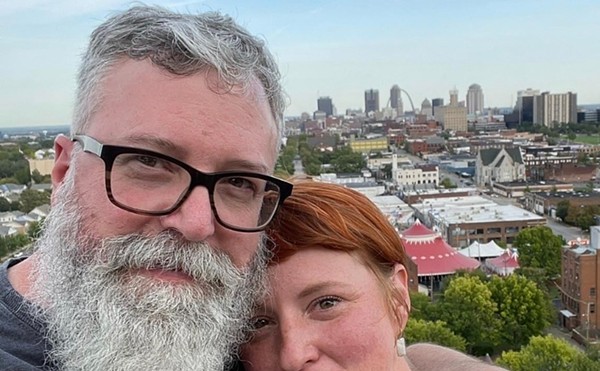"Old-time" mandolinist Jeff Miller and bluegrass violinist Jeremy Brown were both looking to play klezmer, and in April they hooked up. They then recruited bassist Iggie Tiemann (the token Gentile) from the Smokehouse All-Stars and clarinetist Paul Wexler, who also plays in Bob Herman's klezmer big band Klezundheit, to form Yidn, which simply means "Jews."
Klezmer was the wedding music of 19th-century Jewish villages in Eastern Europe. The music is sometimes wild and sometimes contemplative but almost always good for dancing. In some numbers, the violin and clarinet entwine in pretty countermelodies. In others, Wexler says, "the clarinet plays and then the band kind of echoes the chord; it's almost like in synagogue, like the rabbi talks and then the congregation says, "Oh, yeah, yeah, yeah, yeah, yeah, right.' Like other traditional music, they [klezmer tunes] are basically simple melodies, but the whole expression of them is where there's a lot of room for ornamentation."
Klezmer's origins go back about 500 years, when a class of itinerant musicians, the klezmorim, played at the marathon seven-day weddings in the shtetls, or Jewish villages, in what is now Poland and Russia. The music took elements of Gypsy, Greek, Russian, Ukrainian, Polish and Hungarian music, as well as Jewish liturgical chants. The weeklong wedding rituals were extremely elaborate, and the klezmorim were responsible for playing certain songs at very specific times, such as when "taking the in-laws home or when the bride was getting dressed," says Miller.
The Holocaust eliminated every shtetl in Europe, and klezmer was one of many lost facets of the culture -- until an unexpected revival in America decades later. Musicians like bluegrass-mandolin virtuoso Andy Statman, the Klezmer Conservatory Band, Brave Old World and the Klezmatics have brought klezmer to the masses, and, in the case of some adventurous groups, bluegrass, jazz, rock, Latin and even punk and ska have been integrated into the mix. In St. Louis, Itzhak Perlman's "In the Fiddler's House" klezmer tour had them dancing in the aisles of Powell Hall three years ago, and Yidn recently opened for the New Orleans Klezmer All-Stars at Cicero's.
"As much as I love Brahms and Mozart," says the classically trained Wexler, "this stuff really feels like my music. Late in life to arrive at this -- it's been like a whole awakening for me."
No matter how raucous the klezmer song, there always seems to be a trope of sadness embedded in the melody. The bittersweet sound reflects something of the whole experience of the Jewish people -- something that for Jewish listeners, and, perhaps, for the entire audience, cuts deep.





